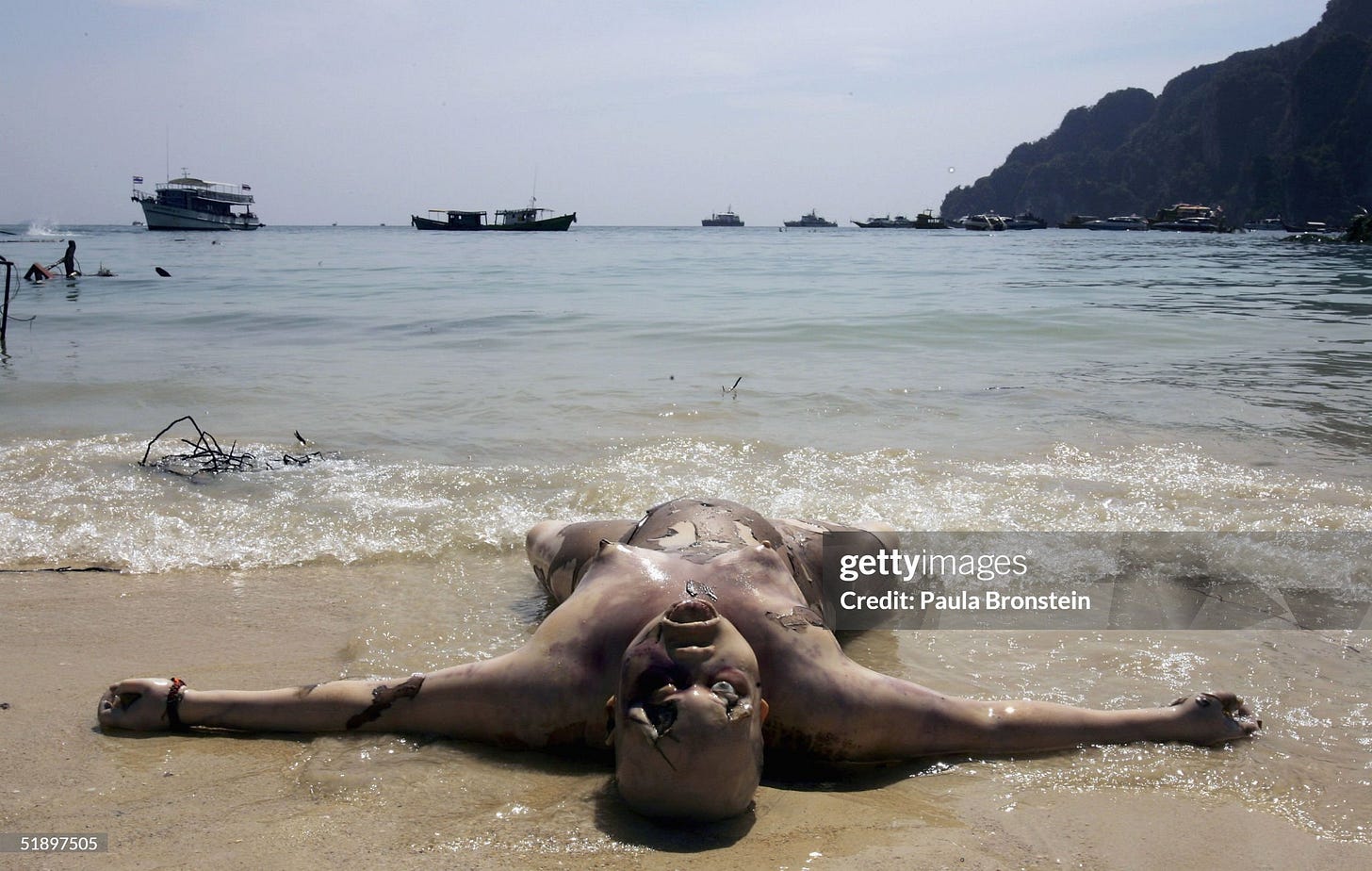The True Origin of the Day of the Dead
Halloween Ain't What you Think It Is
Halloween has grown into a rather awful American holiday that has twisted the true purpose of its origins. However, that origin is probably the most terrible thing that has happened to fallen humanity in the past 6,000 years. In truth, Halloween is rooted in the ancient commemoration of the most horrific event in human history: Noah’s Flood.
Halloween shares deep historical roots with All Souls’ Day, which is itself connected to Mexico’s Day of the Dead, and, according to certain interpretations, all of these traditions may ultimately trace back to ancient commemorations of Noah’s Flood—a cataclysmic event purported to have claimed over a billion lives. While the connections span centuries, religious reformations, and cultural blending, the common thread among them is the ritual and remembrance of the dead, reflecting humanity’s enduring fascination with mortality and the afterlife.
Halloween and All Souls’ Day: Shared Origins
Halloween’s most direct ancestor is the Christian observance of All Hallows’ Eve—the night before All Saints’ Day, established in the eighth century when Pope Gregory III assigned November 1 as the date to honor Christian saints. This move was a Christianization of existing harvest and ancestral festivals, most notably Samhain, a Celtic celebration marking the end of the harvest season and the onset of winter. Samhain was believed to be a time when spirits of the dead could cross into the world of the living, so communities lit bonfires and wore costumes to protect themselves from wandering souls.
As Christianity spread across Europe, its holy days blended with local traditions. All Saints’ Day commemorated the saints, while the following day, All Souls’ Day (November 2), became a time for prayers and masses offered for all departed faithful, not just canonized figures. Catholics observed these days by attending church, praying for the souls in purgatory, and visiting graveyards to decorate family graves—a practice that persists in many cultures.
The Day of the Dead: Christian and Indigenous Synthesis
The Mexican holiday Día de Muertos, or Day of the Dead, owes much to this Christian calendar but integrates Indigenous beliefs dating back millennia. Pre-Hispanic civilizations such as the Aztecs and Maya held cyclical views of life and death, honoring ancestors through offerings and rituals designed to nourish and guide their spirits. When Spanish colonists imposed Catholicism, these rituals merged with All Saints’ and All Souls’ Days to create a unique holiday honoring the dead and stressing the continuity of existence.
Day of the Dead is thus the result of Catholic holy days entwined with Indigenous reverence for ancestors. Today, families gather at cemeteries, decorate graves with marigolds and candles, share food, and celebrate the lives of their loved ones—emphasizing joyous remembrance over mourning.
Noah’s Flood: Commemoration and Global Death Festivals
The idea that All Souls’ Day, Day of the Dead, and Halloween ultimately stem from ancient commemorations of Noah’s Flood is advanced by historians such as Colonel John Garnier. Garnier posits that global festivals of the dead—especially those held near November—can be traced to traditions originating with the biblical Deluge. Given the explosion of flood legends across diverse civilizations, Garnier theorizes that many ancient societies marked both the destruction wrought by the Flood and the subsequent rescue from it, using this pivotal event as a template for rituals commemorating the dead.
These commemorations, Garnier suggests, developed into widespread festivals of death and remembrance, subtly evolving as societies changed. The sacrifices Noah offered after the Flood and the honoring of souls lost in the Deluge became embedded in traditions, rituals, and mythologies across continents. The flood’s timing—said to have begun on the “seventeenth day of the second month,” corresponding roughly to November—aligns with the present-day death festivals in many cultures.
Global Traditions and Cultural Persistence
Practically every ancient civilization—from Assyria and Egypt to China, India, and Native America—contains flood legends and days set aside for memorializing the dead. The universal commemoration of lost souls connects with deep human anxieties surrounding death, renewal, and spiritual continuity.
Even the transition of All Souls’ Day and Day of the Dead into joyous celebrations, rather than solemn mourning, reflects ancient views that death is a passage to another realm, integral to the cycles of existence. Lighting candles, offering food, and gathering families reinforce the social bonds among the living and the dead—a symbolic gesture echoed from the time of Noah’s sacrifices to the present.
Lasting Connections
The web of associations linking Halloween, All Souls’ Day, the Day of the Dead, and Noah’s Flood reveals more than a simple genealogy of holidays: it uncovers an intricate tapestry of myth, history, and human longing for remembrance. The distinct markers of each tradition—costumes, bonfires, prayers, offerings—are outward signs of a persistent recognition that life and death are inseparable, and both deserve ritual acknowledgment.
As families make altars for loved ones, parade in costumes, or offer prayers for ancestors, they participate in a tradition that, stretched over millennia, affirms humanity’s resolve to remember, mourn, and celebrate its collective past. Whether charted through religious doctrine or ancient legend, the commemoration of the dead endures as a central, unifying ritual—linking autumn’s descent not only to saints and souls, but also, perhaps, to the memory of a world transformed by flood.



